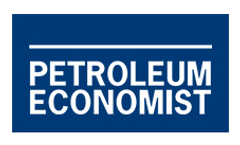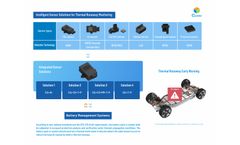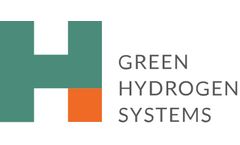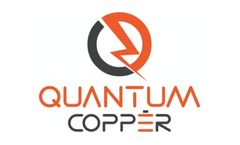hydrogen fuel storage Articles
-
Behaviour investigation of hematite nanorods synthesised by hydrothermal method use in hydrogen fuel storage
For the first time, hematite nanorods were successfully synthesised using iron nitrate precursors in the presence of cation SO4−2. This is also the first time that an investigation into hematite nanorods behaviour for hydrogen fuel storage has been carried out. Microspheres constructed with α-FeOOH nanorods were synthesised via a novel hydrothermal method using a mixture of Fe(NO3)3 · 4H2O and ...
-
Gaseous release in LiNH2–MgH2 systems
Hydrogen is considered a safe and clean alternative to fossil fuels. Hydrogen storage is currently obtained by compressing the gas at high pressure. Researchers are currently attempting to tackle safety and energy density issues by locking hydrogen into solids, packing large quantities into small volumes. However, most of the known solids (i.e. intermetallics) show very low gravimetric density, ...
-
Combined fuel cell?gas turbine plant for highly efficient power generation from renewable energy sources
The impact of renewable energy sources on today's energy supply substantiates the importance of hydrogen as an energy carrier. Hydrogen can be directly produced from solar energy and is considered a promising technology for temporary storage of electrical energy from wind turbines and photovoltaic systems. The generation of electrical energy from stored hydrogen requires highly efficient systems ...
-
Shipping sector braces for emissions storm
Is the fuel oil market ready for tighter carbon and sulphur emissions rules on shipping? Tighter emissions regulations are set to cause a revolution in the shipping fuel market over the next few years, with plans now in place for carbon emissions cuts and tougher regulations on sulphur emissions increasingly likely to come into force in 2020. A compromise agreement reached by member states of ...
-
Cubic Latest Li-battery Thermal Runaway Gas Leakage Detection Solution
Thermal runaway in lithium-ion batteries is a critical concern for safety in electric vehicles. To mitigate the risk of thermal runaway in lithium-ion batteries, it is crucial to proactively implement comprehensive monitoring solution to provide early warning as preventive step against potential harm from lithium-ion battery thermal runaway incidents. As mandated by UN GTR 20 and GB 38031:2020, ...
-
Project with Nexeya - Case Study
Project with Nexeya. HyProvide™ A30 to produce hydrogen on-site using excess renewable energy for energy storage and hydrogen as fuel. Key Facts A-Series A30 Product 65 Production (kg H2/day) 28 Outlet pressure (bar) France Project location On-site production of hydrogen HyProvide™ A30 to produce hydrogen on-site using excess renewable energy for energy storage and hydrogen as ...
-
Scenarios for the role of hydrogen in a future energy system based on renewable energy
An all-renewable energy system for a group of North European countries is investigated by temporal simulation of the demand-supply matching for various system configurations. The role of hydrogen technologies for energy storage and fuel cell applications is studied and applied to both stationary and transportation sectors. It is shown that there is scope for considerable amounts of energy trade ...
-
Why is Catalyst Research Central to Achieving Hydrogen Energy?
Catalyst research offers a vital contribution to the production of hydrogen energy. Green hydrogen has so much potential to make an impact on the productivity and efficiency of future sustainable energy sources. So, there is merit in understanding what opportunities could come from catalyst advancements and hydrogen utilization. Learn more below about catalyst development and how it can enhance ...
-
Solar Power International Trade Show on Power & Energy
Solar Power International is designed to serve and advance the solar energy industry by bringing together the people, products, and professional development opportunities that drive the solar industry and are forging its bright future. The show has since evolved to match the growth of the industry, bringing together an extensive alliance of renewable energy leaders to become the largest gathering ...
-
Oscillating syngas production on NiO/YSZ catalyst from methane oxidation
Introduction Nickel oxide/yttrium-stabilized zirconia (NiO/YSZ) is a state-of-the-art anode used in solid oxide fuel cells (SOFCs). Despite its excellent electrochemical activity in hydrogen fuel cells, there are barriers to the storage of hydrogen, which have stimulated interest in the investigation of chemical reactions on NiO/YSZ involving methane, a major component of natural gas. Many ...
-
Designing a sustainable hydrogen energy economy
A general vision of a sustainable energy economy relying substantially on hydrogen produced from renewables is sketched as a potential solution to the twin global crises of climate change and depleting oil reserves. Core differences between this 'sustainable hydrogen economy' (SHE) and the original hydrogen economy (HE) proposed in the early 1970s are discussed. In transport, rather than posing a ...
-
Micropower system modeling with Homer
The HOMER Micropower Optimization Model is a computer model developed by the U.S. National Renewable Energy Laboratory (NREL) to assist in the design of micropower systems and to facilitate the comparison of power generation technologies across a wide range of applications. HOMER models a power system's physical behavior and its life-cycle cost, which is the total cost of installing and operating ...
-
Rare earth intermetallic compounds
Rare-earth intermetallic compounds are metal compound phases formed between rare-earth metals and other metals or similar metals. They mainly use the special physical and chemical properties of rare-earth intermetallic compounds to prepare new rare earths for various purposes using various processing and manufacturing techniques. Functional Materials. At present, there are the following rare ...
Need help finding the right suppliers? Try XPRT Sourcing. Let the XPRTs do the work for you





